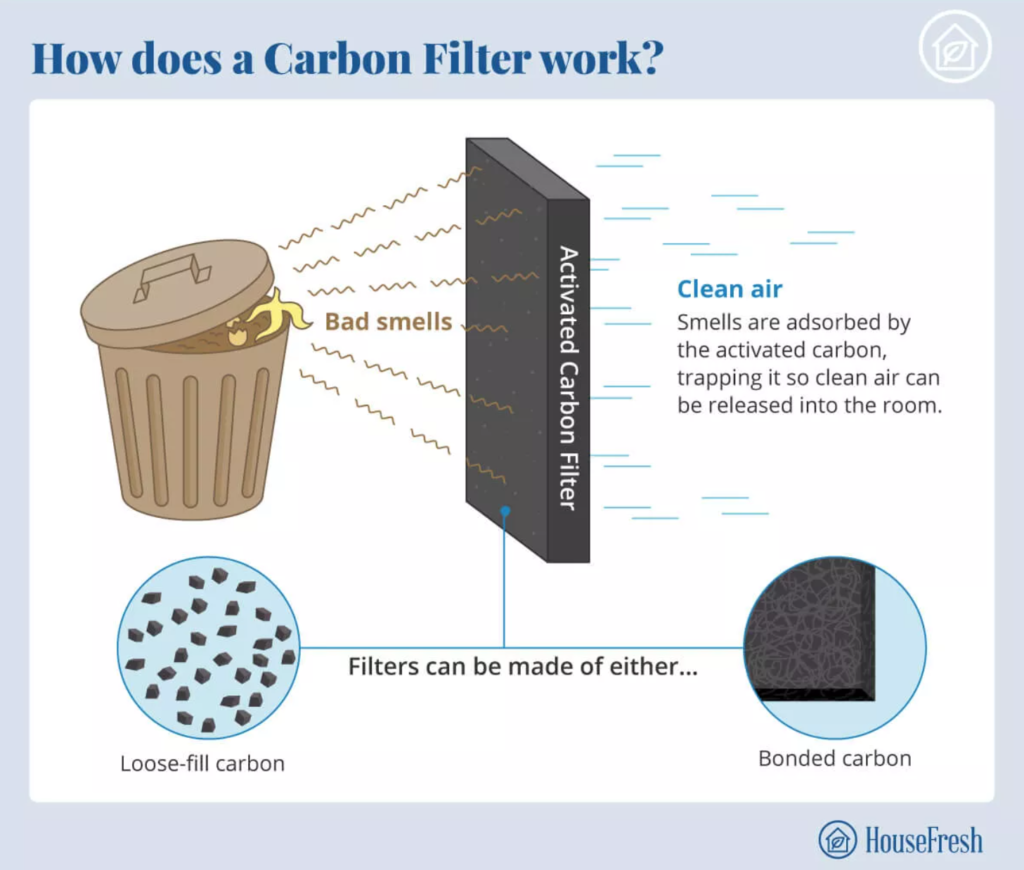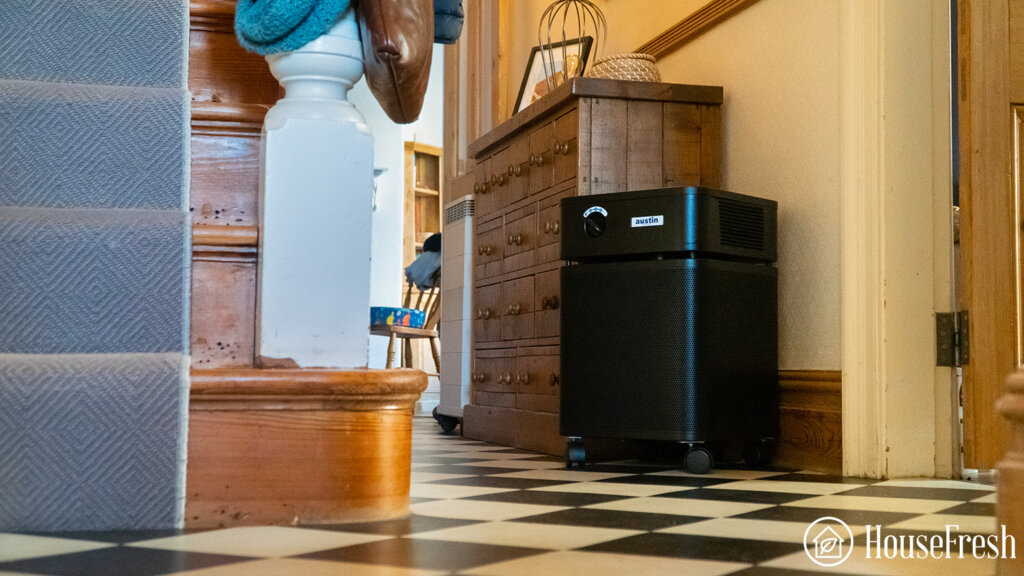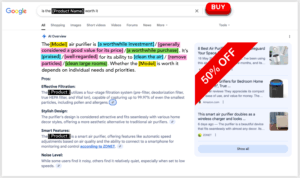If you’ve looked into purchasing an air purifier you will have come across the term “activated carbon”. If this has left you with questions, you’re in the right place.
But, first things first: what is carbon, and how is it activated?
Carbon is made when a chemical reaction is introduced to materials such as bamboo, willow peat, wood, and coal. Think of burning wood on a fire. After the fire goes out, you’re left with a black substance and pieces of blackened wood. The char that remains is mainly carbon (otherwise known as charcoal). This is left because all the combustible material in the wood has burned away.
Carbon can also be made in an industrial process. This involves heating substances in a vacuum chamber until all the VOCs (volatile organic compounds) are released, leaving only carbon behind. This is then collected and used for all kinds of things, from removing odors to purifying liquids.
For carbon to be effective at trapping VOCs, it needs to go through a process of activation, which is usually performed in a high-temperature kiln. During this activation process, the carbon is injected with hot air, carbon dioxide, or steam to create a lattice of tiny pores to increase the surface area of the carbon.
By making the carbon larger, it makes more room to capture harmful molecules, making it far more effective as a filter. After the carbon is activated, it is treated with chemicals to enhance its ability to filter specific harmful molecules, making it the ideal substance to use in an air purifier.
How do activated carbon filters work?
Now we know what activated carbon is, let’s look at how it works as a filter.
Most air purifiers come with an activated carbon filter as standard, claiming they will remove odors from your home. They come in all shapes, sizes, and weights, some are filled with loose carbon, and some use a sheet of bonded carbon. Whichever form they come in, they are there to do the same job.
Once the carbon has been activated, it’s ready to do its job.

Here’s what the process looks like:
- Contaminated air enters the filtration system
- The air passes through the activated carbon air filter
- The process of adsorption takes place to remove the contaminants
- Purified air flows out of the activated carbon filter and back into the room
You will notice the word adsorption when we talk about how activated carbon removes harmful contaminants from the air. This is different from absorption, which you may be more familiar with:
- Adsorption = contaminants stick to the outside of the carbon substrate
- Absorption = contaminants are absorbed inside the structure, like a sponge
Absorption is best used when collecting liquid, like using a paper towel to soak up a water spill from a surface. Adsorption, on the other hand, is the most effective way of removing pollutants from the air, like activated carbon, in an air purifier filter.
What they can remove from the air
What they won’t remove from the air
How much activated carbon should you aim for?
Introducing the air purifiers we’ve tested with the biggest amount of activated carbon in their filters.
You might be wondering, ‘Does the amount of carbon matter?’ And the answer is, yes, it absolutely does. The most effective filters are the ones that contain the most carbon. The more carbon there is, the more substance there is to adsorb airborne pollutants.
Plus, filters with higher amounts of activated carbon will have a longer lifespan meaning fewer replacements, saving you money in the long term.
So if you want to get the most out of a filter, go for an air purifier with a filter with at least two lbs of activated carbon.
These are the top choices based on our testing:
IQAir HealthPro Plus (5 lbs of activated carbon)
The V5-Cell filter in the HealthPro Plus is packed with over 5 lbs of activated carbon and zeolite mix, making it one of the most powerful air filters on the market to deal with odors and VOCs. However, be aware that this power comes at a cost: this device is power-hungry and the filter replacements are more expensive than the vast majority of filters from other brands. That said, filters will last for up to four years, so this helps reduce yearly maintenance costs.
Austin Air HealthMate (15 lbs of activated carbon)
With its 15 lbs of carbon, the Austin Air HealthMate is the best air purifier on the market for dealing with severe air quality issues connected to chemical gasses, unwanted odors and VOCs. However, with a price that surpasses $700, this device is overkill for those looking to keep dust and pollen levels low due to its high initial and running costs.

Dyson Big+Quiet BP06 (2 lbs of activated carbon)
The BP06 from Dyson comes with 900g of activated carbon, which doesn’t seem like much compared to the IQAir HealthPro Plus or the Austin Air HealthMate, but it’s still A LOT compared to most other air purifiers you will find on Amazon. This is a good amount of carbon and will help with removing unwanted odors from the air but it won’t be enough for those of you who need to deal with serious VOC issues.
I hope my article helped you clarify any doubts you mad had about activated carbon filtration. If you have any questions that I didn’t answer along the way, please drop them in the comments section below and Danny will get back to you right away.





